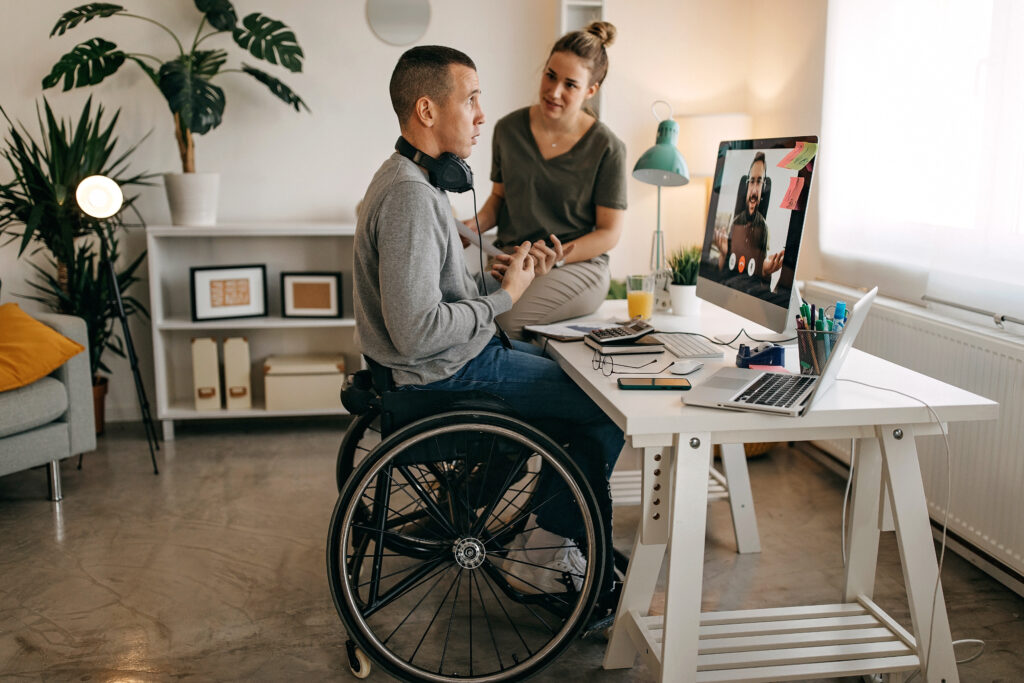Designing for accessibility doesn’t belong to one field—it spans every corner of our lives. From healthcare to education, tech to transportation, inclusive design solutions have the power to remove barriers industry by industry, improving outcomes, access, and engagement for everyone.
Let’s explore how inclusive design is reshaping entire sectors by proactively breaking down barriers.
Healthcare: Empowering Patients Through Design
In healthcare, accessibility can be a matter of life and health—not just convenience. Inclusive solutions create more equitable patient experiences.
- Digital appointment systems that support screen readers and multiple languages.
- Telehealth platforms with real-time captions and easy navigation for people with cognitive disabilities.
- Wayfinding signage in hospitals that combines text, icons, Braille, and color contrast for clear orientation.
These aren’t just accessibility wins—they’re essential tools for reducing stress, confusion, and inequity in care delivery.
Education: Supporting Diverse Learning Styles
Inclusive design transforms learning spaces into inclusive environments where all students can thrive.
- Accessible digital classrooms designed for keyboard, voice, and screen reader use.
- Flexible content formats—text, video, audio, interactive elements—cater to different learning preferences and support neurodiversity.
- Classroom layouts that accommodate mobility aids, sensory needs, and collaborative learning.
Inclusive education design leads to improved engagement and outcomes—not just for students with disabilities, but for every learner.
Technology: Mainstreaming Usability
Tech is at its best when everyone can use it intuitively. Inclusive design removes digital divides.
- Responsive web design that works on all devices and input methods.
- Customizable interfaces that adapt to user preferences: font size, contrast, motion, and more.
- AI-powered tools that auto-generate captions, text descriptions, or read content aloud.
Good tech design doesn’t isolate—it invites.
Workplaces: Supporting Productivity and Well-being
Inclusive workplaces break down barriers to employment and boost employee well-being and performance.
- Flexible workspaces that accommodate standing or seated positions, various mobility devices, or sensory sensitivities.
- Accessible hiring platforms with clear instructions, screen reader compatibility, and inclusive language.
- Remote work tools built with accessibility in mind—ensuring inclusive communication and collaboration.
When everyone can contribute fully, organizations thrive.
Public Spaces: Designing for Daily Life
From transit systems to libraries, inclusive design creates safer, more welcoming public spaces.
- Step-free access for buses and trains, with audio and visual alerts for all users.
- Universal signage systems using symbols, multiple languages, tactile elements, and high contrast.
- Community centers and libraries with accessible furniture, assistive technologies, and inclusive programming.
These features remove obstacles and foster community connection and mobility.
When industries embrace inclusive design, they do more than meet accessibility standards—they design for belonging. Every feature that removes a barrier is a step toward a more just and humane society.
Source: Read MoreÂ

